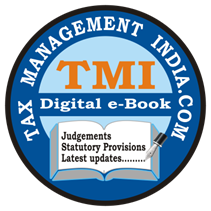| TMI Short Notes |
Complexities of Tax Deductions - requiring actual payment for certain deductions: Clause 37 of the Income Tax Bill, 2025 vs. 43B of the Income Tax Act, 1961 |
Submit your Comments
Clause 37 Certain deductions allowed on actual payment basis only. IntroductionClause 37 of the Income Tax Bill, 2025, represents a significant legislative effort to streamline and clarify the conditions under which certain deductions can be claimed by taxpayers. This clause mandates that specific deductions are permissible only on an actual payment basis, irrespective of the accounting method employed or the year in which the liability was incurred. This provision is crucial as it aligns with the broader objective of ensuring transparency and accountability in tax compliance. Objective and PurposeThe primary objective behind Clause 37 is to ensure that deductions related to certain expenditures are only allowed when the payments have been made. This approach minimizes the risk of tax evasion through deferred payments or accounting manipulations. Historically, the intent has been to close loopholes that allow taxpayers to claim deductions without actual disbursement, thereby enhancing revenue collection efficiency. Detailed AnalysisSub-section (1): General RuleSub-section (1) establishes the foundational rule that deductions under this clause are only permissible in the tax year when the payment is made. This is irrespective of any contrary provisions within the Act, the accounting method, or the year the liability was incurred. This ensures consistency and uniformity in the application of tax laws. Sub-section (2): Specific DeductionsSub-section (2) enumerates the types of payments eligible for deductions, including:
Sub-section (3): Timing of PaymentThis sub-section allows for deductions if the specified payments are made after the end of the tax year but before the filing of the return. This provision offers flexibility to taxpayers while ensuring timely compliance. Sub-section (4): Interest ConversionInterest converted into a loan or other financial instrument is not considered 'actually paid.' This clause prevents the deferment of liabilities through financial restructuring. Sub-section (5): Prevention of Double DeductionIf a deduction has been claimed in the year the liability was incurred, it cannot be claimed again when the payment is made. This prevents double-dipping and ensures equitable tax treatment. Sub-section (6): Employee ContributionsThis provision excludes sums received from employees for welfare funds from the deductions, aligning with the principle that only employer contributions are eligible. Sub-section (7): Definition of Specified Financial EntitiesThis sub-section defines the financial entities from which interest payments are deductible, including public financial institutions, state finance corporations, and certain banks. Practical ImplicationsClause 37 has significant implications for businesses and individuals, particularly in terms of cash flow management and compliance. Businesses must ensure timely payments to claim deductions, impacting their financial planning and operational liquidity. Additionally, the clause necessitates meticulous record-keeping and adherence to payment schedules to avoid disallowance of deductions. Comparative Analysis with Section 43B of the Income Tax Act, 1961General SimilaritiesBoth Clause 37 and Section 43B emphasize deductions based on actual payment, overriding other provisions and accounting methods. They aim to ensure that tax deductions reflect actual economic outflows. Differences in Specific Provisions
Unique Features of Clause 37Clause 37 introduces specific provisions for payments to micro and small enterprises, reflecting a legislative focus on supporting these sectors. This addition addresses a gap in Section 43B, providing clarity and promoting timely payments to these enterprises. ConclusionClause 37 of the Income Tax Bill, 2025, represents a comprehensive approach to ensuring that tax deductions are grounded in actual economic transactions. By requiring actual payment for deductions, the clause enhances transparency and compliance. The comparative analysis with Section 43B highlights both continuity and innovation in legislative intent, with Clause 37 addressing modern economic realities and supporting small enterprises. Future reforms may continue to refine these provisions, ensuring they remain effective in a dynamic economic environment.
Full Text: Clause 37 Certain deductions allowed on actual payment basis only.
Dated: 8-3-2025 Submit your Comments
|
 9911796707
9911796707
